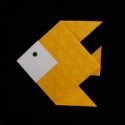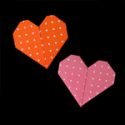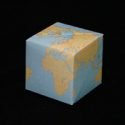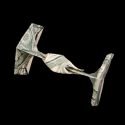Tea Bag Folding
In Fabric Folding, you fold napkins, towels, and fabric. In tea bag folding, you do NOT fold soggy tea bags. The name “Tea Bag Folding” refers to the folding of tea bag wrappers, not the tea bags themselves.
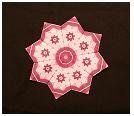 Tea bag folding may have originated in Holland by a lady named Tiny van der Plaas. She needed a birthday card for her sister but didn’t have any decorative paper. She fiddled with tea bag wrappers and was inspired to use them in her card. To this day, tea bag folding continues to be a popular method for making cards and decorations. [Photo: tea bag folding, kite fold].
Tea bag folding may have originated in Holland by a lady named Tiny van der Plaas. She needed a birthday card for her sister but didn’t have any decorative paper. She fiddled with tea bag wrappers and was inspired to use them in her card. To this day, tea bag folding continues to be a popular method for making cards and decorations. [Photo: tea bag folding, kite fold].
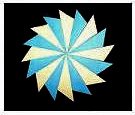 Tea bag folding is also called miniature kaleidoscope origami. It is similar to the modular origami used to make stars, rings and wreaths. In both cases, paper is folded into units and many units join to form the final model. The major difference is that tea bag folding requires glue; the units do not interlock with one another. [Photo: tea bag folding, half-kite fold].
Tea bag folding is also called miniature kaleidoscope origami. It is similar to the modular origami used to make stars, rings and wreaths. In both cases, paper is folded into units and many units join to form the final model. The major difference is that tea bag folding requires glue; the units do not interlock with one another. [Photo: tea bag folding, half-kite fold].

How to Fold Tiles
Tea bag folding is relatively simple.
- Cut decorative paper into small, square sheets (called “tiles”).
- Fold the tiles in a rather simple manner.
- Glue the folded sheets side-by-side to form a rosette (called “medallions”).
There are many ways to fold the tiles, here are a few basic folds:
In Europe, tea bag wrappers are colorful and have decorative designs. These wrappers can be cut to size and used to make beautiful medallions. indeed, this is why this craft was called tea bag folding. Gizella Hagedus’ images show decorative tea bag wrappers and their corresponding medallions.









